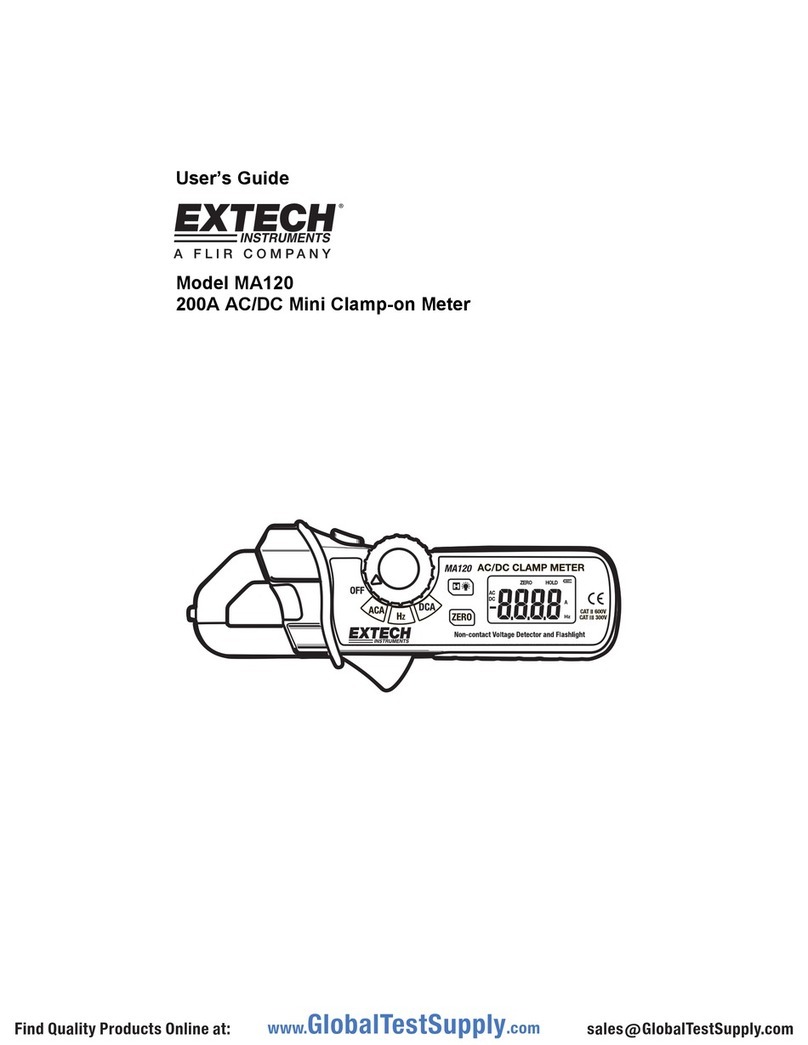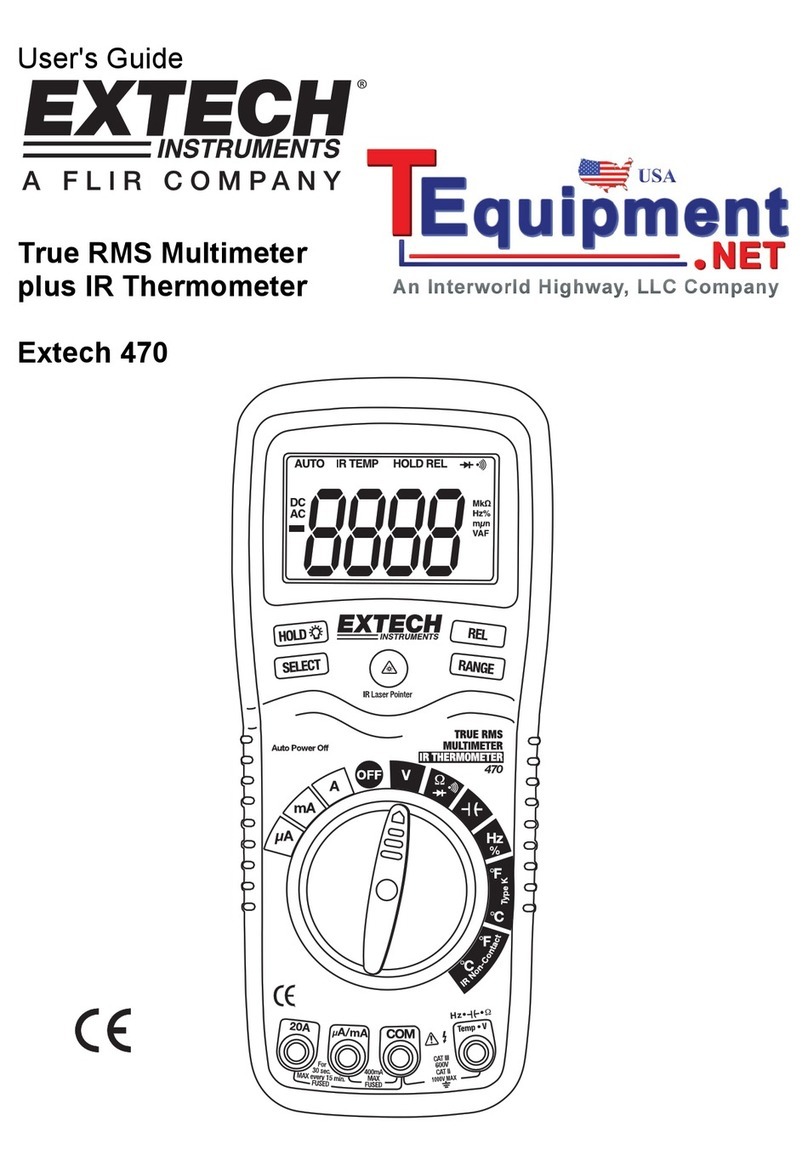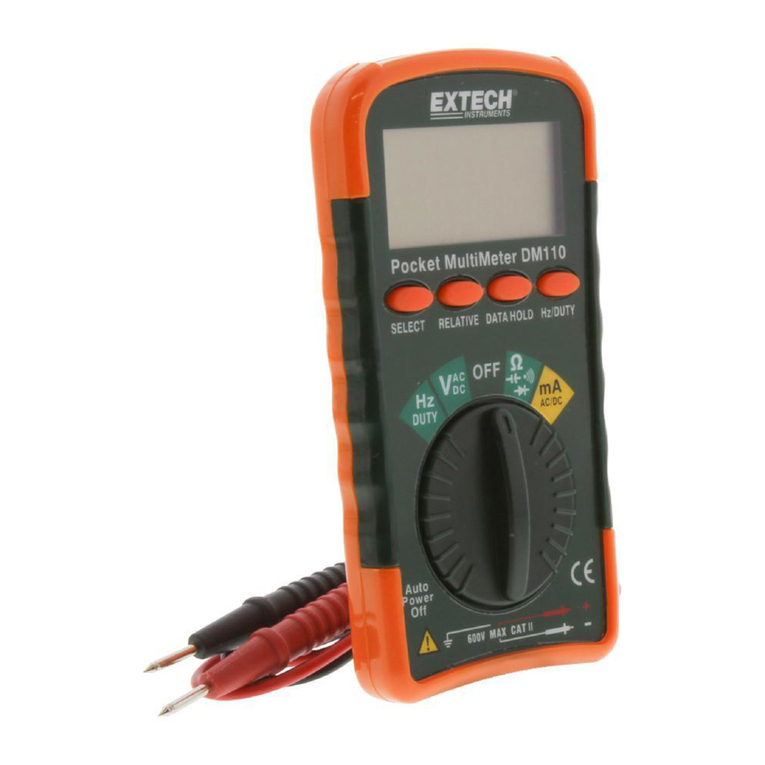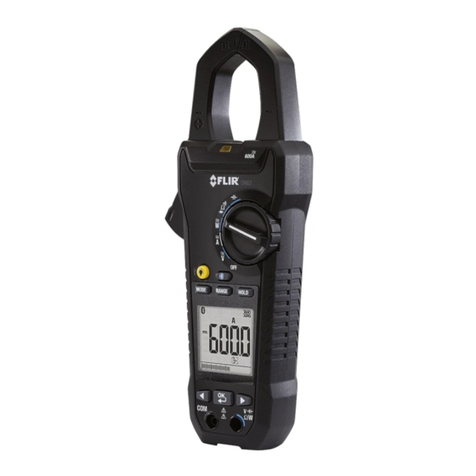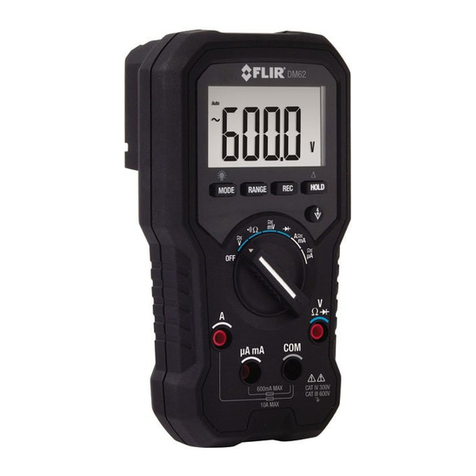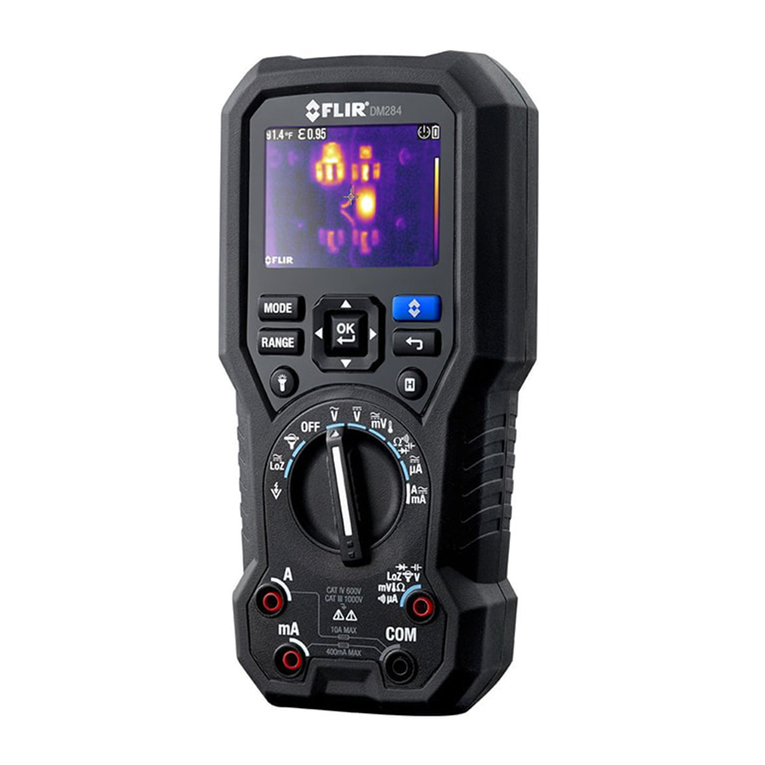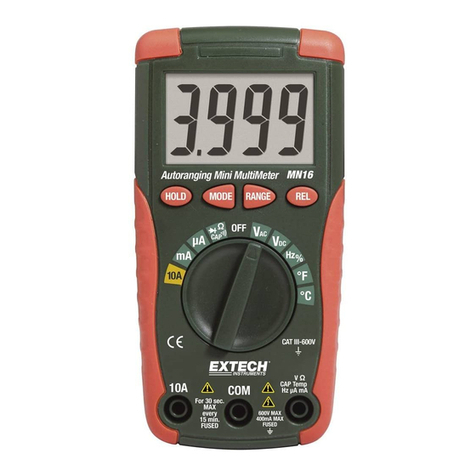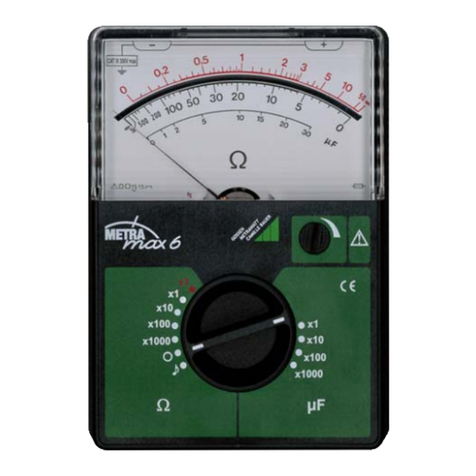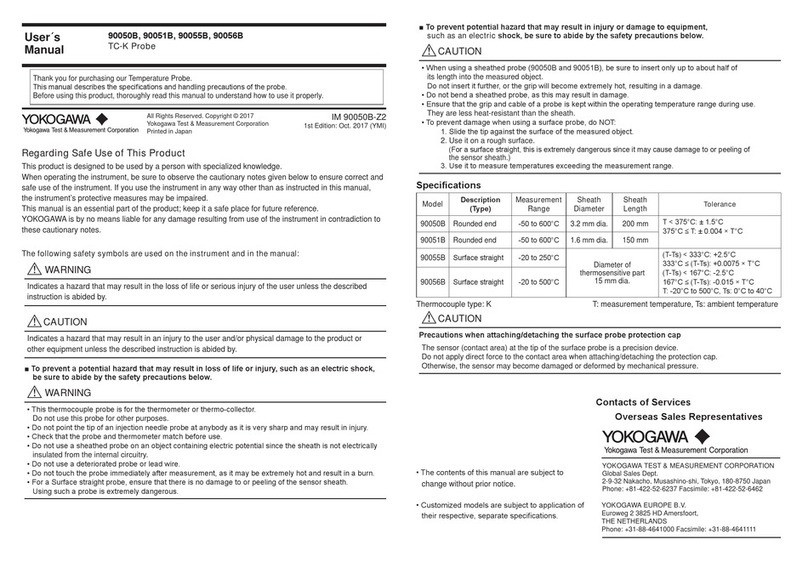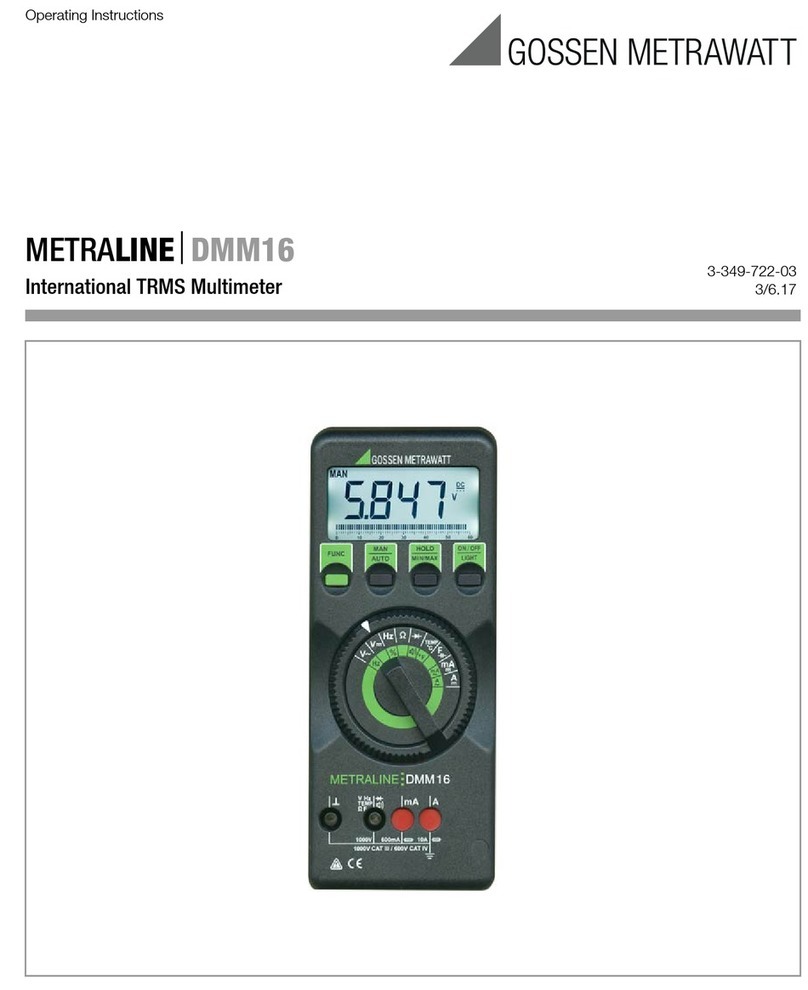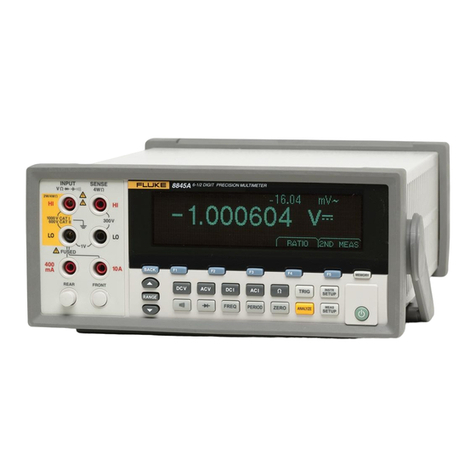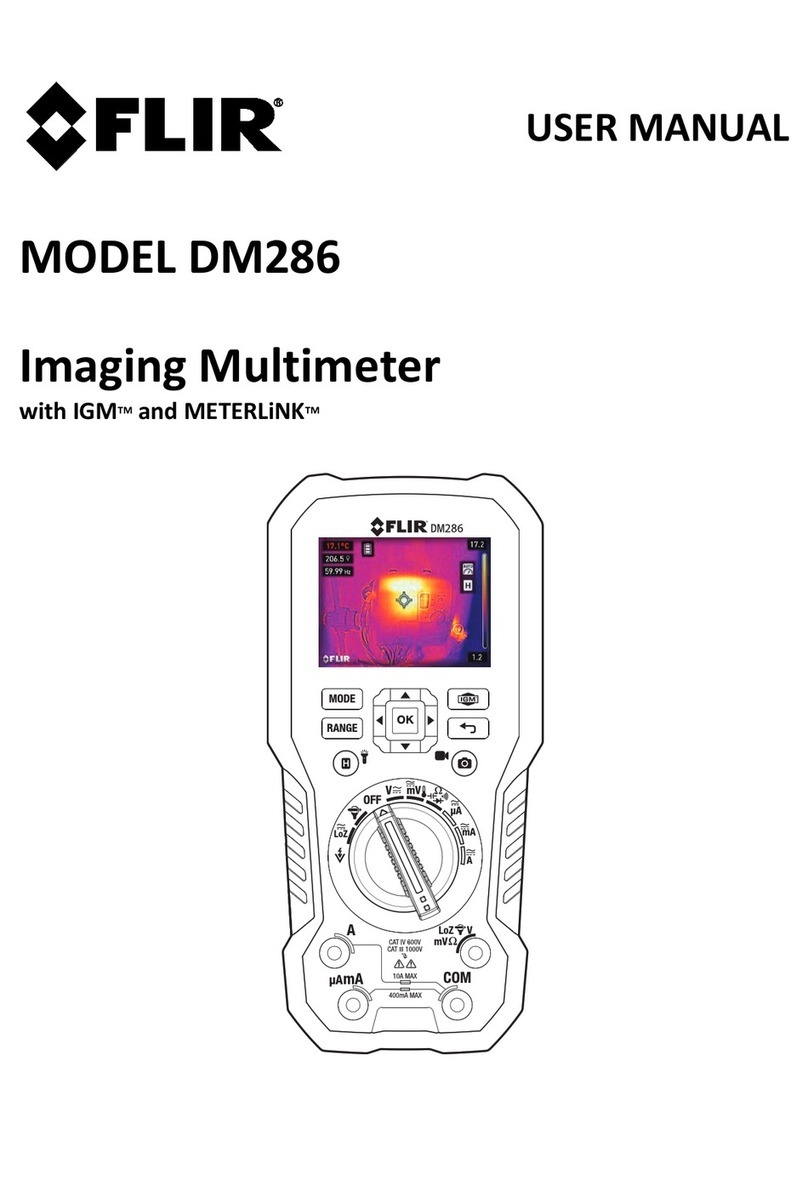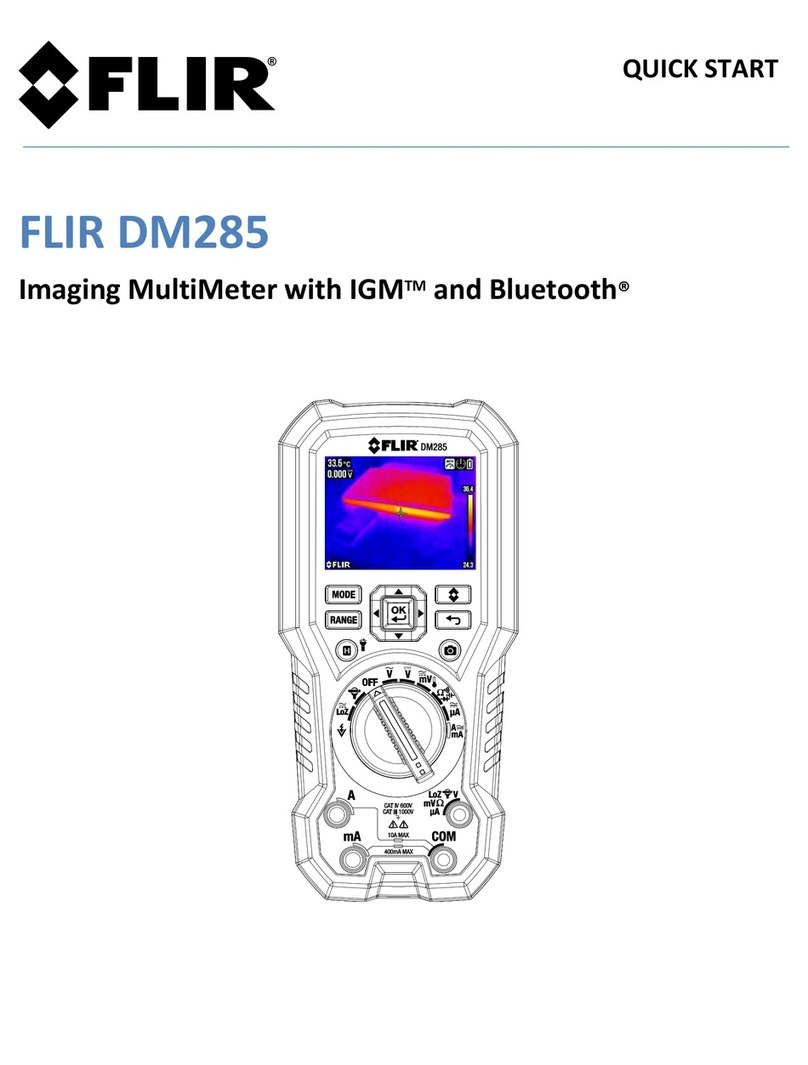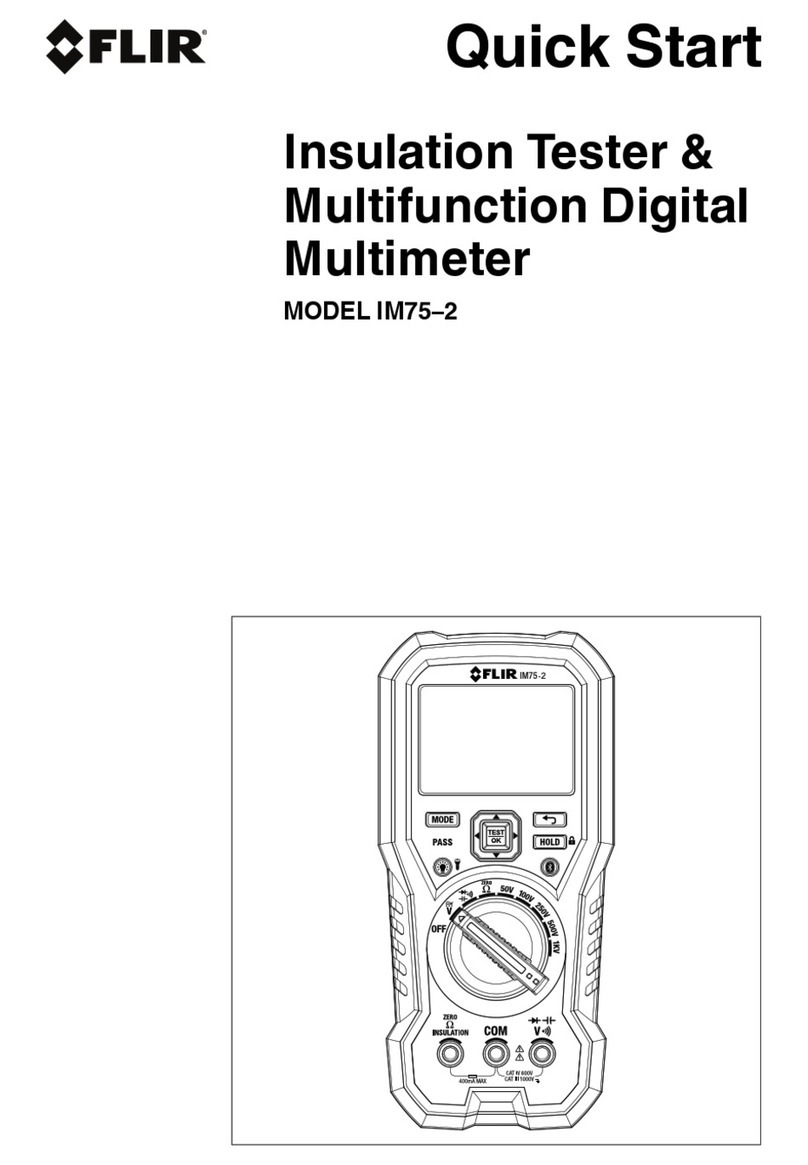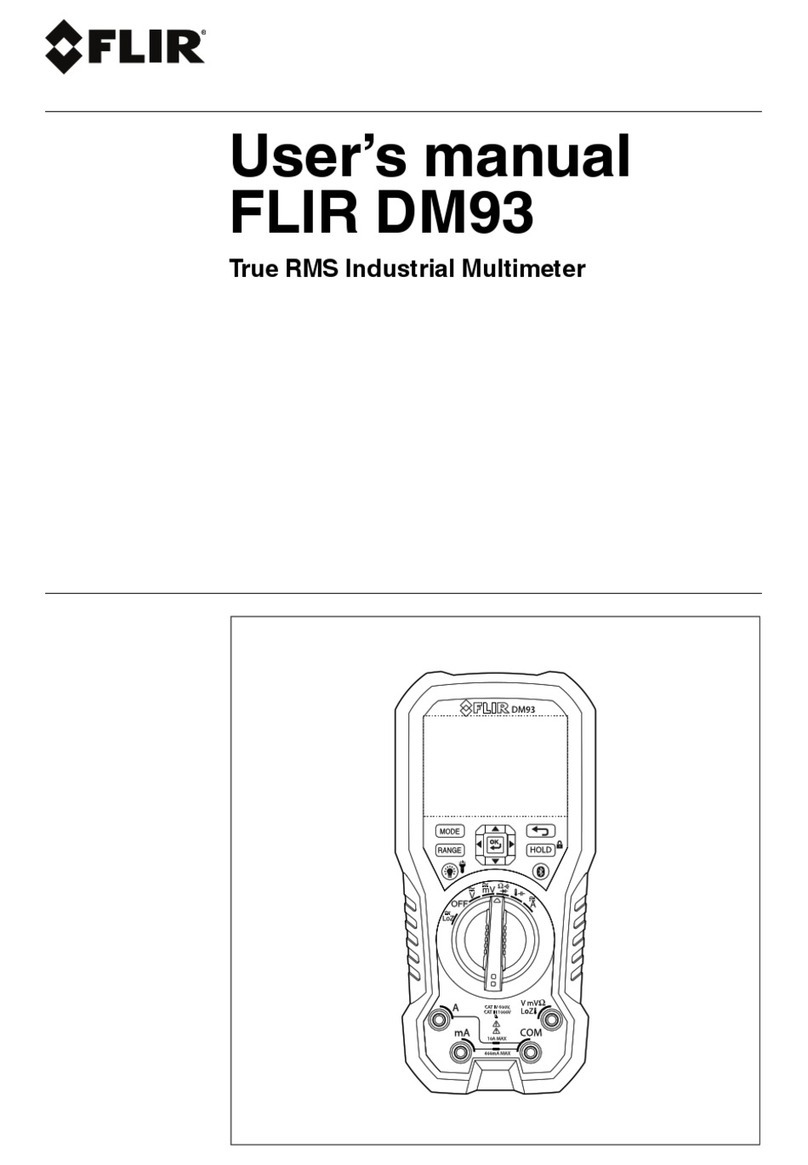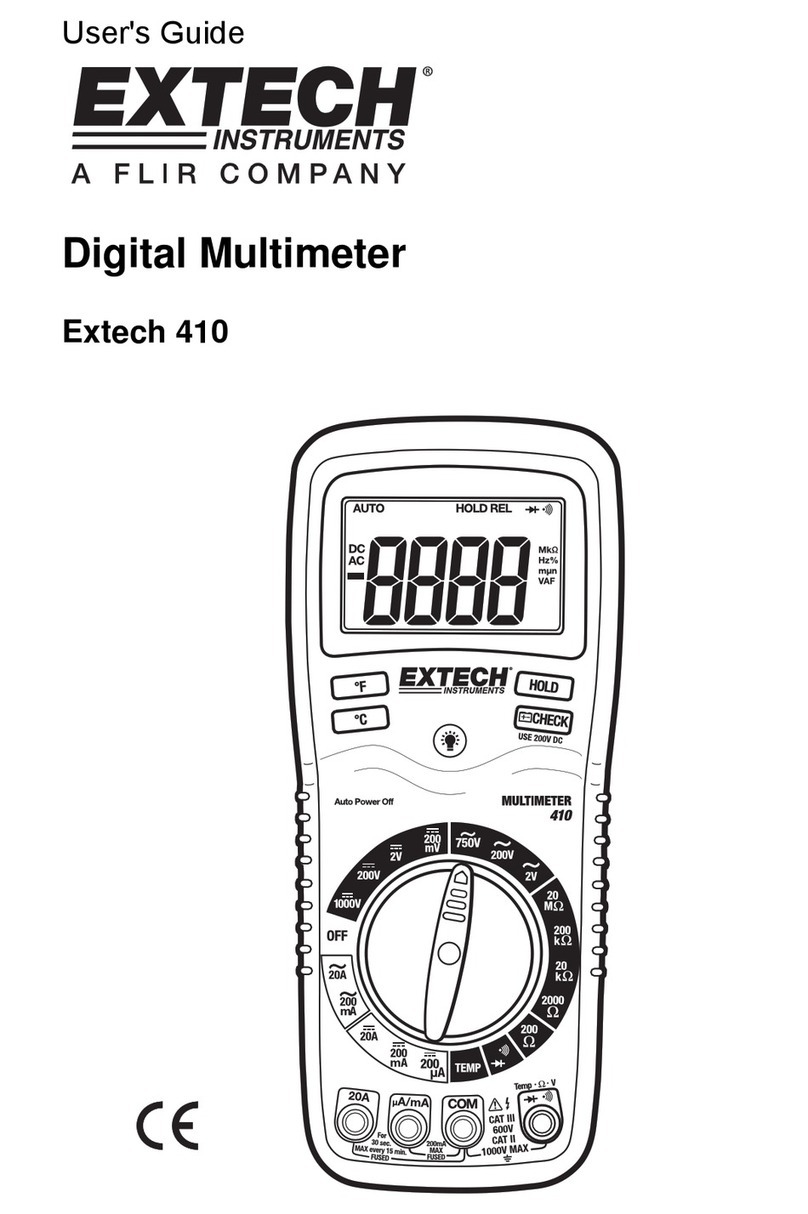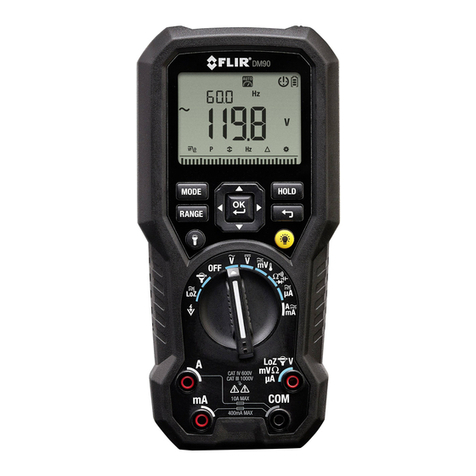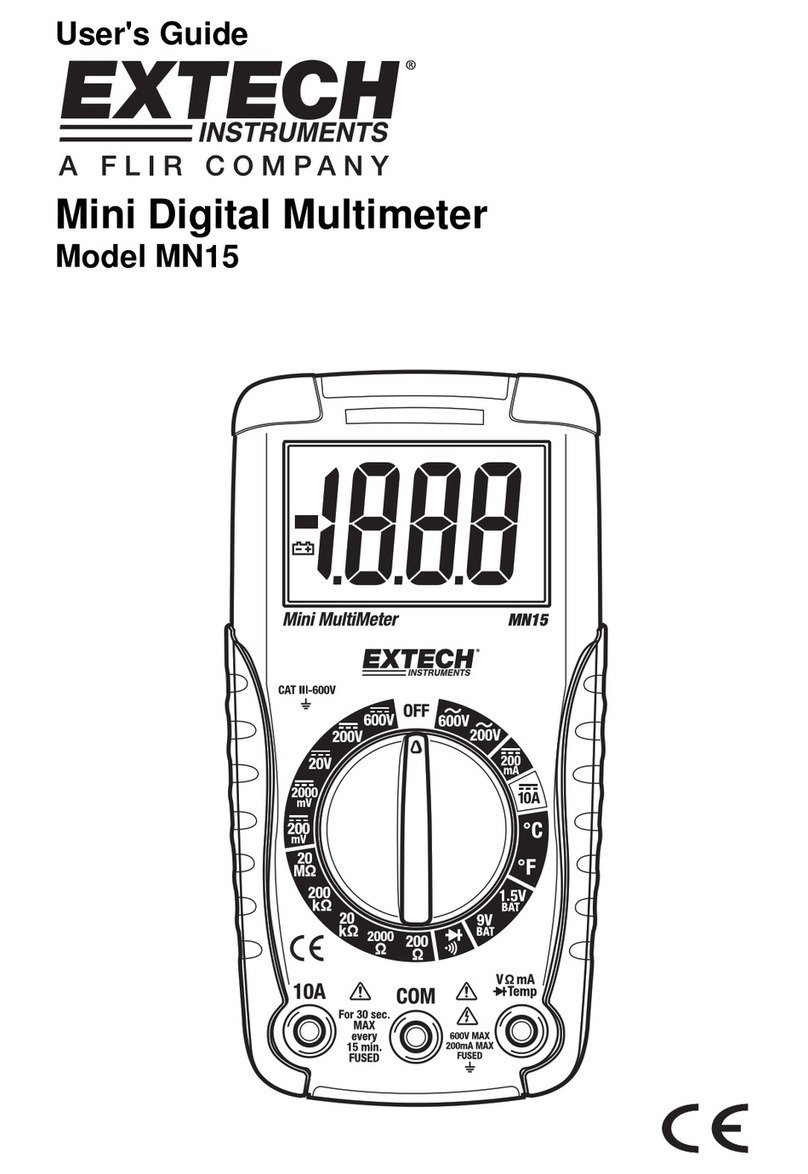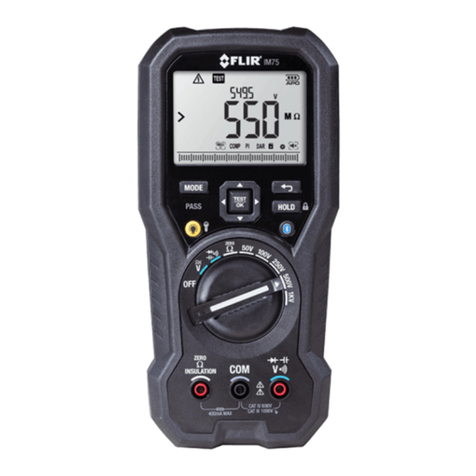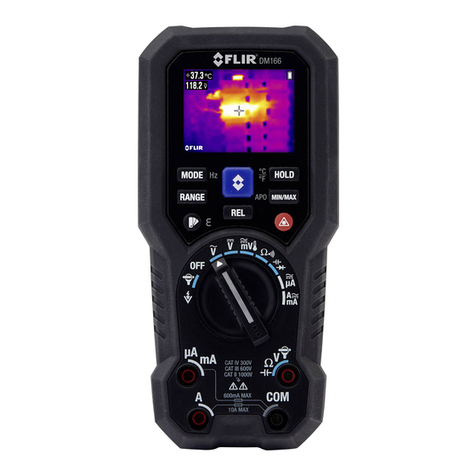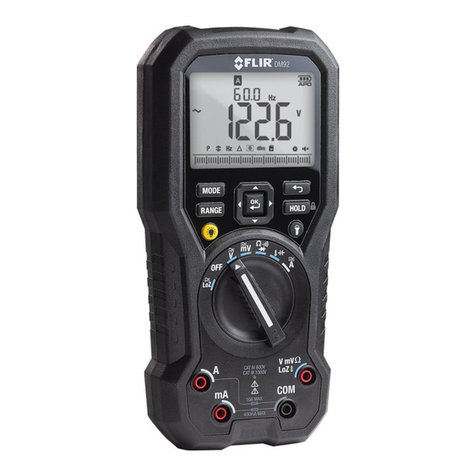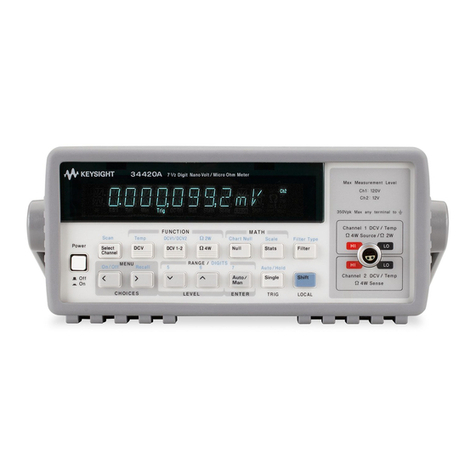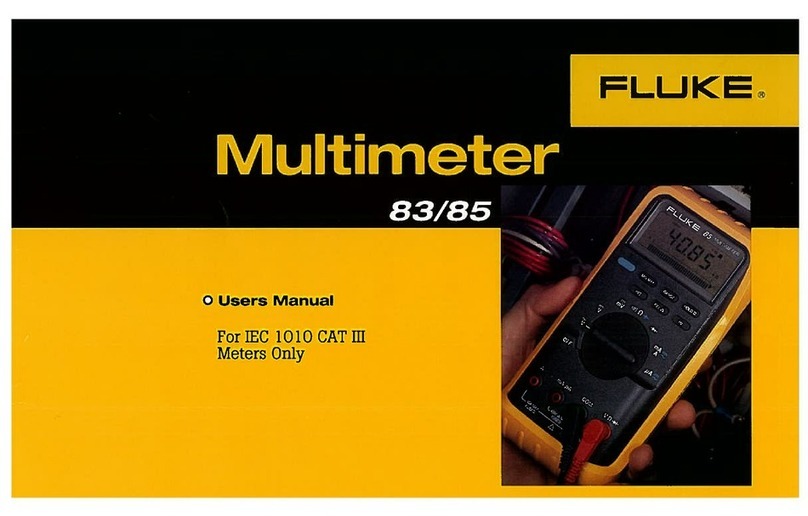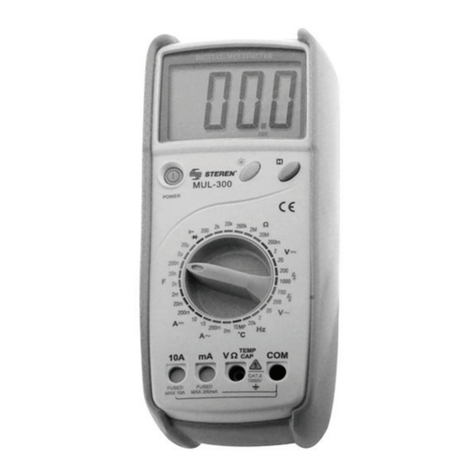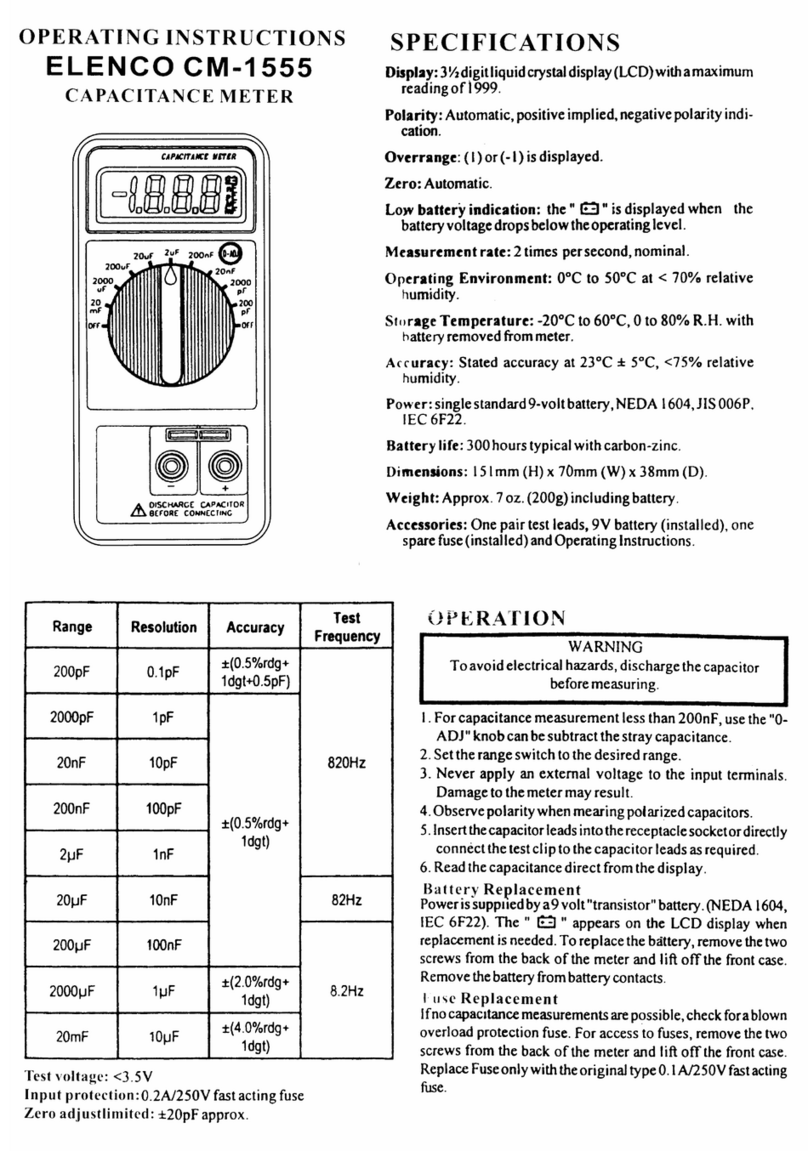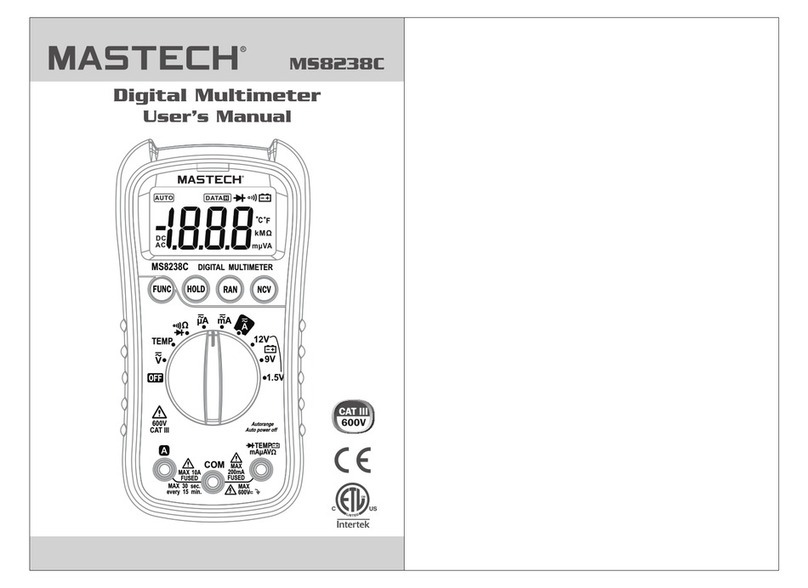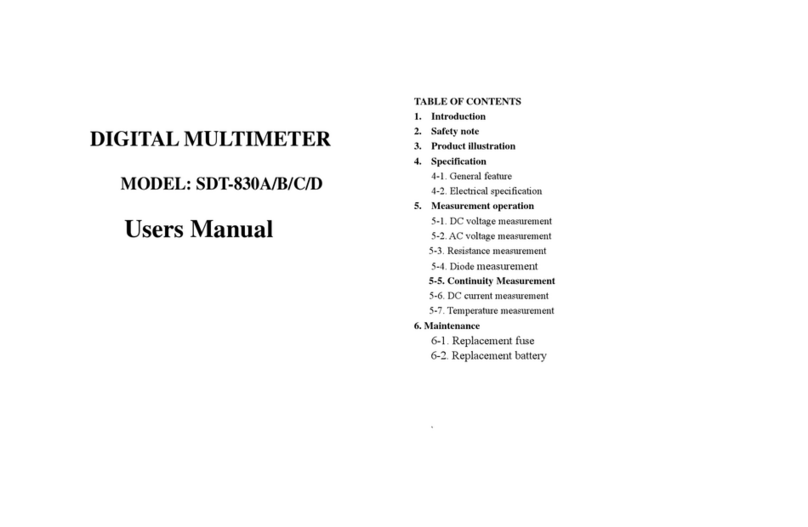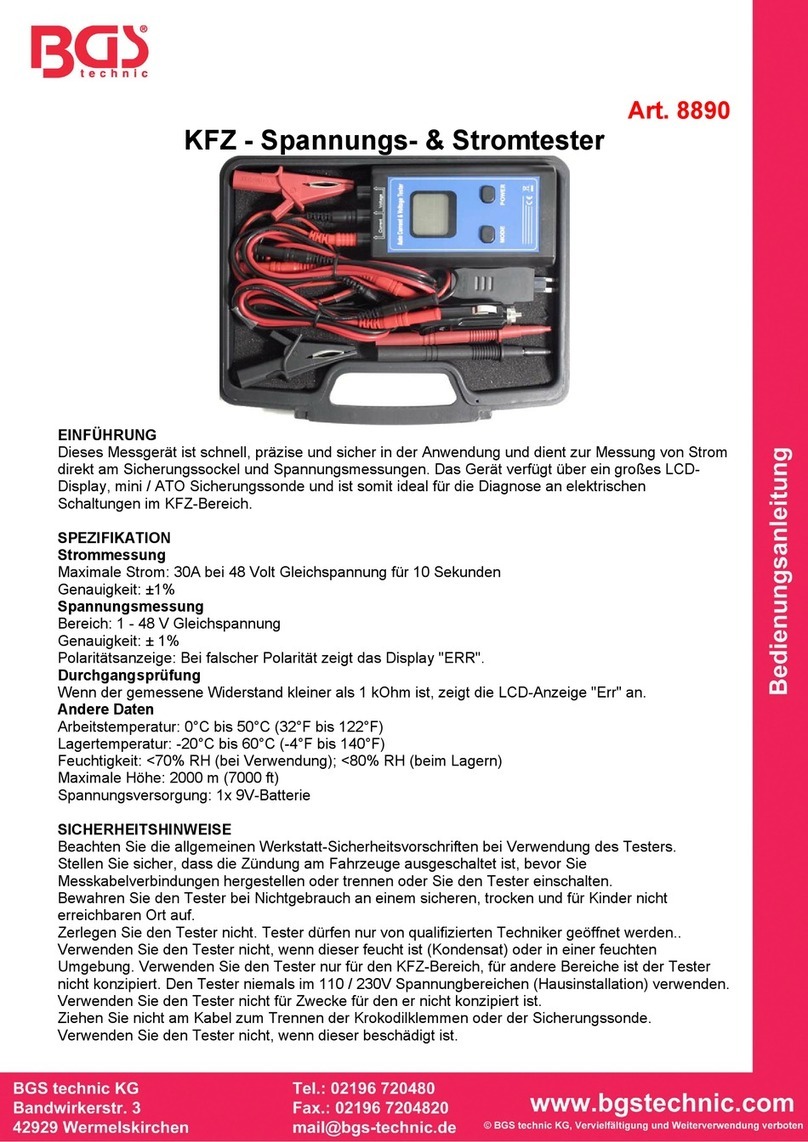
Operation
AC or DC Voltage Measurement
1. Set the function switch to the “ AC/DCV” position
2. Press the SELECT button to select AC or DC voltage
measurement
3. Touch the test probe tips to the circuit under t est. Be sure to
observe the correct po larity (red lead to positive, black lead to
negative).
4. Read the voltage on the display
Resistance/Continuity Measurement
WARNING: To avoid electric shock, disconnect po wer to the unit
under test and discharge all capacitors before taking any
resistance measurements. Remove the batteries and unplug the
line cords. Never measure continuity on circuits or wires that
have voltage on them.
1. S et the function s witch to the “ Ω •))) ” position.
2. Connect the test leads to the circuit to be measured.
3. Read the value on the display.
4. For Continuity tests, press the SELECT button until the “•)))“
symbol appears in the display.
5. If the resistance is less than 60 ohms, an audib le tone will sound.
Capacitance Measurement
WARNING: To avoid electric shock, disconnect po wer to the unit
under test and discharge all capacitors before taking any
capacitance measurements. Remove the batteries and un plug
the line cords. Never measure continuity on circuits or wires that
have voltage on them.
1. S et the function s witch to the “ Ω •))) ” position.
2. Press the SELECT button until “nF” appears in the display.
3. Press the RELATIVE button to zero the display
4. Connect the test leads to the capacitor to be measured.
5. Read the value on the display.
Diode Test
WARNING: To avoid electric shock, do not test any diode that
has voltage on it.
1. S et the function s witch to “ Ω •))) “position.
2. Press the SELECT button once to enter Diode Test. The “ “
symbol will appear in the display.
3. Touch the test probe tips to the diode or semiconductor junction
you wish to test. Note the meter reading.
4. Reverse the test lead polarity by reversing the red and black
leads. Note this reading.
5. The diode or junction can be evaluated as follows:
A. If one reading shows a value and the other readi ng shows OL,
the diode is good.
B. If both readings sho w OL, the device is open.
C. If both readings are very small, or 0, the device is shorted
AC/DC Current Measurement
1. Set the function switch to the “mA AC/DC” position.
2. Press the SELECT button to measure AC or DC mA.
3. Remove power from the circuit under test and open t he circuit at
the point where you wish to measure current.
4. Touch the black test probe tip to the negative side of the circuit
and touch the red test probe tip to the positive side of the circuit.
5. Apply power to the circuit.
6. Read the value on the display
Frequency/Duty Cycle Measurement
1. Set the function switch to the “HZ/DUTY” position.
2. Press the Hz/DUTY button once to display Duty Cycle %. Pressing
the button again will toggle the display to frequenc y (Hz).
3. Touch the test probe tips to the circuit under t est. Be sure to
observe the correct po larity (red lead to positive, black lead to
negative).
4. Read the value on the display.
Features
Relative Button
The relative measurement feat ure allows you to make measurements
relative to a stored reference value. A reference voltage can be
stored and measurements made in comparison to that value. The
displayed value is the difference between the reference value and the
measured value.
1. Perform the measurement as described in the operating
instructions.
2. Press the RELATIVE button to store the reading in the display and
the "REL" indic ator will appear on the display.
3. The display willnow indicate the difference between the stored
value and the measured value.
4. Press the RELATIVE button to exit the relative mode.
Note: The Relative function does not operate in the Frequenc y
function.
Data Hold Button
The Data Hold function allo ws the meter to “freeze” a measurement
for later reference
1. Press the “DATA HOLD” button to “freeze” the display, the
“HOLD” indicator will appear.
2. Press the “DATA HOLD” button to return to normal operation.
Auto Power Off
1. To save power, t he display automatically turns off in 30 minutes.
2. Press the SELECT button to t urn display back on.
3. To cancel Auto Power Off, set the function switch to the off
position. Hold down the SELECT button and turn t he function
switch to the desir ed position and release the SELECT button after
3 seconds.
Maintenance
WARNING: To avoid electric shock, disconnect the t est leads
from any source of voltage before removing the battery cover.
WARNING: To avoid electric shock, do not operate your meter
until the battery cover is in place and fastened securely.
This MultiMeter is designed to provide years of d ependab le service, if
the following gui delines are followed:
1. KEEP THE METER DRY. If it gets wet, wipe it off.
2. USE AND STORE THE METER IN NORMAL
TEMPERATURES. Temperature extremes can shorten the life of
the electronic parts and distort or melt plastic parts.
3. HANDLE THE METER GENTLY AND CAREFULLY. Dropping it
can damage the electronic parts or the case.
4. KEEP THE METER CLEAN. W ipe the case occasionally with a
damp cloth. DO NOT use che micals, cleaning solvents, or
detergents.
5. USE ONLY FRESH BATTERIES OF THE RECOMMENDED
SIZE AND TYPE. Remove old or weak batteries so they do not
leak and damage the unit.
6. IF THE METER IS TO BE STORED FOR A LONG PERIOD OF
TIME, the batteries should be removed to prevent damage to the
unit.
WARNING: Disconnect the test leads from any source of v oltage
before removing the back cover or the battery/fuse door. Do not
operate your meter until the rearhousing is in place and fastened
securely.
Replacing the Battery
1. Remove the rubber ho lster (if in place)
2. Remove Philips head scr ew a nd lift off the rear housing of the
meter.
3. Replace old battery with fresh CR2032 type button battery.
4. Replace the r ear cover and secure the screw.
You, as the end user, are legally bound (Battery
ordinance) to return a ll used batteries and
accumulators; disposal in the household garbage is
prohibited!
You can hand over your used batteries / accumulators
at collecti on points in your community or wherever
batteries / accumulators are sold!
Disposal: Follow the valid legal stipulations in respect
of the disposal of the device at the end of its lifecycle
more infor for Extech DM110
Phone: 01235 838 555
Email: cs@airconcern.co.uk
Web. www.airconcern.co.uk
Air Concern Ltd, Building 173 Curie Avenue Harvell Didcot, Oxfordshire
